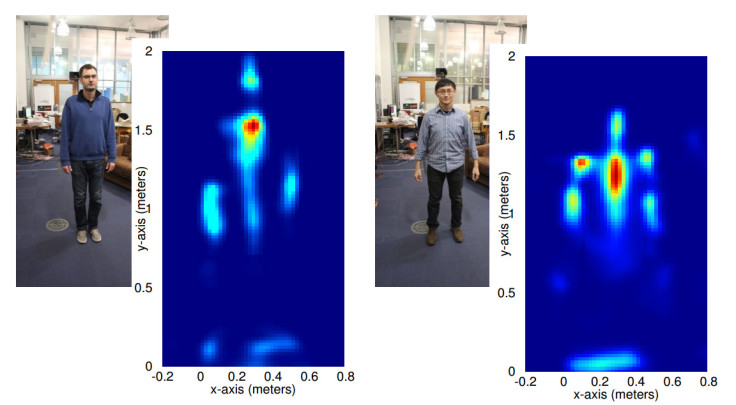MIT invents 'X-ray vision' technology that can detect a human through a wall using radio signals

Computer scientists from MIT have developed new technology that uses radio frequency (RF) wireless electromagnetic waves to sense and track the exact 3D position of a human even through walls. Their invention has huge potential to revolutionise a wide number of industries, from virtual reality to movie motion capture, to caregiving.
Researchers from MIT's Computer Science and Artificial Intelligence Lab (Csail) have developed a new system called RF-Capture that emits wireless signals and then picks up how the signals reflect off a human body to reveal the silhouette of a person standing behind a wall.
By tracking the silhouette of the person behind the wall, the researchers were able to track human motion, even down to the movements that a person's hand makes when they demonstrated writing in the air.
The system was also able to distinguish between 15 different people standing behind the wall with a 90% accuracy, and the wireless signals emitted contain 10,000 times less radiation than what is emitted by a standard mobile phone.
Apart from creating a tool wannabe superheroes would love to get their hands on, having a technology that could determine exactly where a human is in a specific room from the opposite side of the building, and even what the person is doing and who they are, would have immense benefits for many industries.
How X-ray vision can help
For example, motion capture used in movies to map actors' movements to create computer-generated characters, like Andy Serkis' acting for Gollum in the Lord of the Rings films, would be possible without the actor having to wear multiple markers and stand in a room full of cameras.
The technology could also be used by virtual reality or game developers, who are currently trying to decide which haptic controllers will be best at mapping users' movements in a virtual environment, or by emergency services and firefighters to check where and if people are trapped in a burning building without having to put their lives at risk by searching manually.
Another use for the RF-Capture system is to enable caregivers to detect when elderly people fall down or could potentially have an accident, and to that end, some Csail researchers are developing the Emerald Fall Detection system to help people remotely track their parents moving around their home.
The system places a router-like device in the elderly person's home and it tracks if they fall down, no matter what room they are in. If a fall is detected, the device immediately sends a text message to their family or caregiver while calling for an ambulance, and the Emerald app tracks the person's daily movement activity for any changes that might signal that the person is becoming unwell.
The Emerald Fall Detection system is still under development but it was demonstrated by the researchers to President Obama in August.
How RF-Capture works
RF-Capture works by scanning a 3D space to capture wireless signal reflections off the objects in the area and taking consecutive RF snapshots in order to detect specific human limbs. Next, imaging and reconstruction algorithms stitch the signal snapshots together to build up a silhouette, which is similar to the way in which radar systems detect planes, submarines and other metallic structures.
The researchers say that at the moment their model is able to create a basic skeletal structure of a human and accurately judge their height and body shape, but in future they want to be able to capture the human skeleton in more detail.
"The data you get back from these reflections is very minimal. However, we can extract meaningful signals through a series of algorithms we developed that minimise the random noise produced by the reflections," said Dina Katabi, a professor of electrical engineering and computer science at MIT and the director of the MIT Wireless Center.
"In the same way that cell phones and Wi-Fi routers have become indispensable parts of today's households, wireless technologies like this will help power the homes of the future."
The open-access paper, entitled Capturing the Human Figure Through a Wall will be presented at the SIGGRAPH Asia conference in Kobe, Japan in early November.
© Copyright IBTimes 2025. All rights reserved.






















